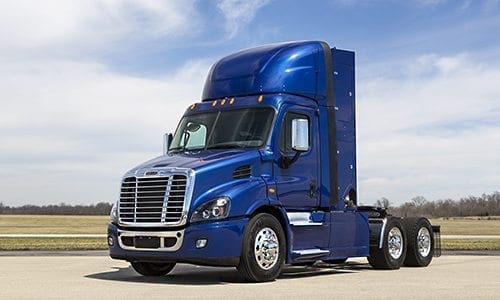At the end of 2015, an ultra-clean heavy-duty engine was announced to have received an emissions certification that is 90-percent cleaner than the current Environmental Protection Agency standard for emissions of nitrogen oxides (NOx). Today, we are seeing trucks with these incredibly clean engines roll off the assembly line and into fleet operations across the nation.
The Cummins Westport ISL G ultra-low NOx natural gas engine is the first commercially available heavy-duty engine to emit near-zero emissions. However, a recent study by the College of Engineering-Center for Environmental Research and Technology (CE-CERT) at the University of California Riverside found that trucks with these engines actually performed with lower emissions than their already clean certification standard during some typical duty cycles, such as local and regional goods movement.
In contrast, the cleanest comparable diesel engine has a 90-percent higher NOx emissions certification than the ISL G near-zero natural gas engine. Studies by the same author from CE-CERT at the University of California Riverside found that diesel vehicles actually performed with up to five times higher NOx emissions on average than their EPA certification standard and emissions increased as the duty cycle decreased, meaning that in lower speed scenarios, such as stop-and-go traffic, the emissions increased.
The emissions levels of medium and heavy-duty trucks are so incredibly important because these same vehicles are considered the number one source of smog-forming emissions of NOx in almost every single metropolitan region across the country. NOx emissions lead to the formation of ozone and small particulate matter (PM2.5), each of which contributes to significant health impacts. More than 50% of Americans are exposed to unhealthy air, putting them at greater risk for asthma, lung cancer, cardiovascular disease, and premature death. In areas with the most severe air quality problems, achieving healthy air quality will require a transition of heavy-duty vehicles to ones that emit zero or near-zero emissions.
The good news is that we finally have the engine technology available to completely transform the nation’s heavy-duty fleet to ones that emit near-zero emissions. Fleets of all sizes can order trucks with a 9-liter version of this ultra-clean engine from most of the traditional truck OEMs. In 2018, Cummins Westport expects to have a comparable 12-liter version of the engine. Dollar-for-dollar, natural gas vehicles deliver the largest and most cost-effective NOx emission reductions compared to diesel and to electric vehicles.
Momentum is building as evidenced in recent air quality rules established by the South Coast Air Quality Management District (SCAQMD), which covers the four-county greater Los Angeles Basin in Southern California. The new plan calls for stringent regulations combined with incentives to provide cleaner air through voluntary actions. At a recent board meeting, the agency’s governing board passed two new amendments to the new plan that favors the new natural gas engines. The first introduced an amendment that added a call for SCAQMD to seek state legislative authority to accelerate purchase of zero and near-zero emission heavy-duty vehicles for public agency fleets, which includes natural gas vehicles. The second amendment calls for incentive funding for heavy-duty vehicle technologies that are currently commercially available for which the agency specifically mentions the ultra-low NOx natural gas engines now entering the commercial market and noting that these vehicles are the most cost-effective technologies to reach short-term air quality goals. California is often seen as an early mover on air quality and transportation issues so it is expected that other cities and states will follow suit over the next several years.
The combination of environmental benefits, commercial availability from major OEMs, and the response from local regulations, natural gas heavy-duty vehicles are primed to transform the nation’s fleet. To learn more about these technologies and other fleet vehicles, check out the Advanced Clean Transportation (ACT) Expo taking place May 1-4 in Southern California.


